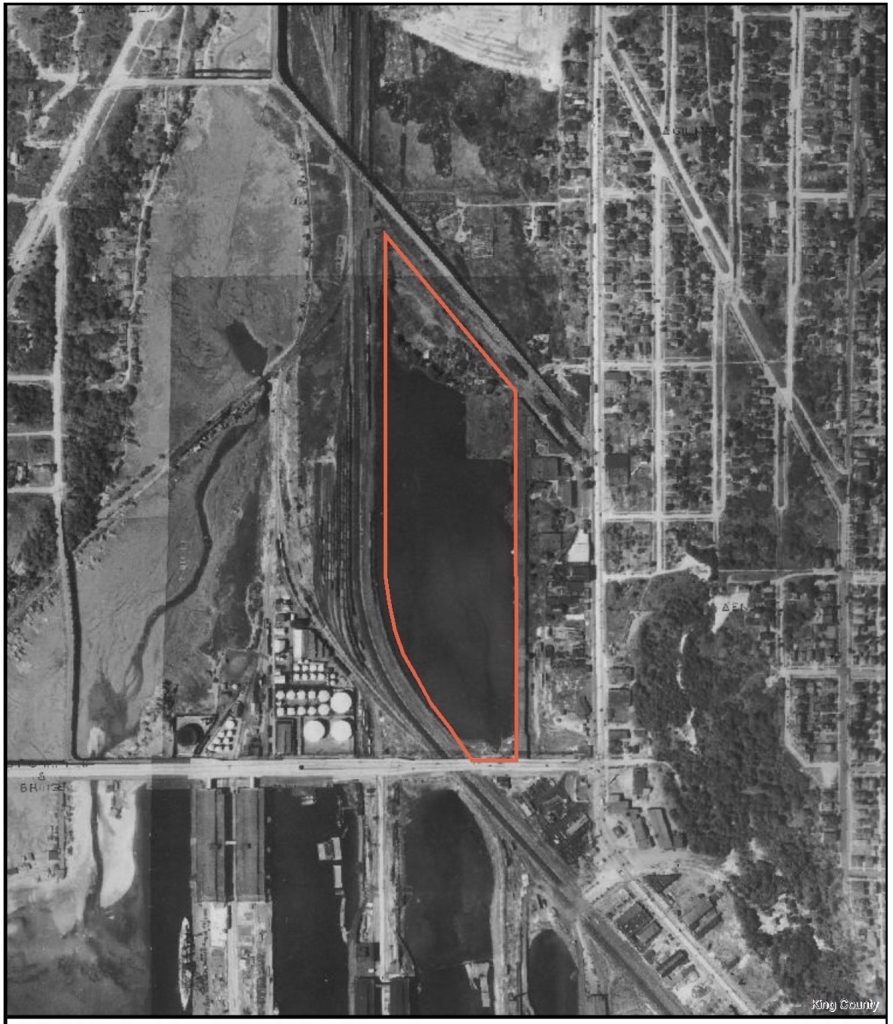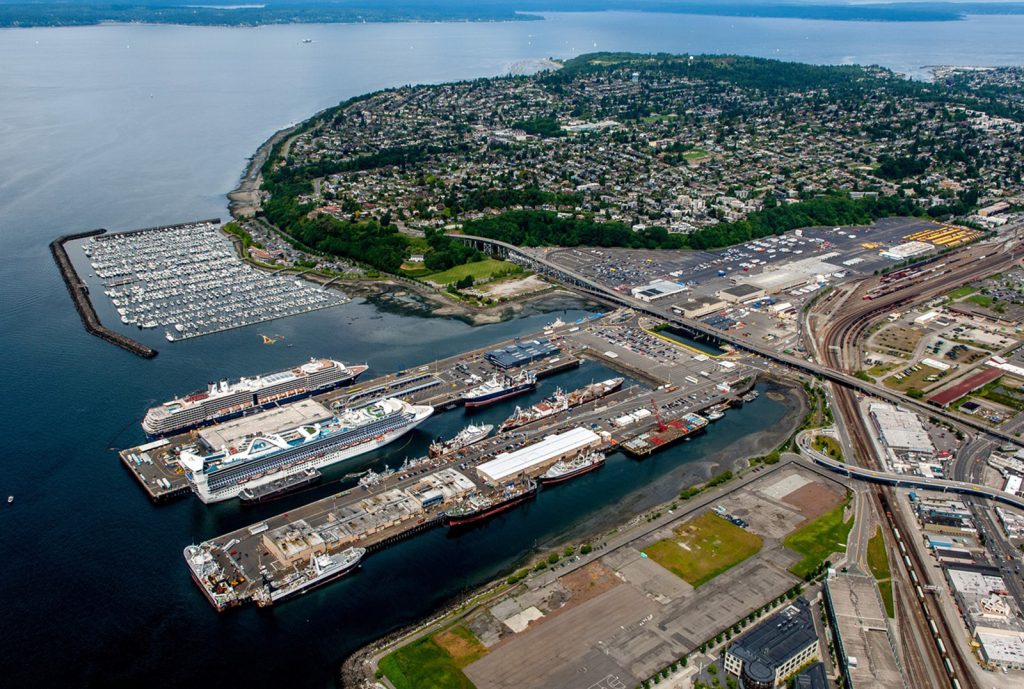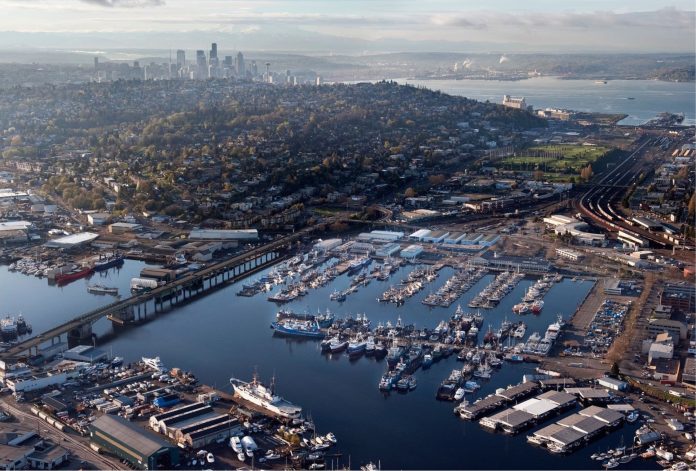A bill to set up a public ownership authority at the Interbay Armory site is in the last stages of the legislative process. On Tuesday, the Washington Senate Ways and Means committee will hear House Bill 1173 at its 1:30pm session. The bill has already passed the House. From the committee, the bill will be sent to the full Senate and then the Governor. If approved, it will mark a new chapter in the development of one of the largest and last mostly empty parcels near downtown Seattle.
Rep. Liz Berry (D-36th Legislative District) is one of the bill’s sponsors. Via email, she summed up the legislation: “The Washington National Guard’s eventual departure from the Seattle Armory property will transfer 25 acres of land in the center of the city into State hands. The establishment of the Interbay State Lands Development Authority ensures that this unique opportunity will be carefully considered by multiple stakeholders and community members. By forming the Authority now, we will be ready to go when the land is officially signed over to the State.”
The last underdeveloped site of similar size and location got a football stadium put on it. To build and manage Lumen Field and the attached events hall, the state also set up a public development authority. That seven-member group was tasked with constructing, owning, and maintaining a stadium/event center and making deals with tenants. Their work continues.
The Interbay State Lands Development Authority will be somewhat different. Its 11-member board will be appointed by the governor from a list of public officials and specialists in housing and workforce development. They will be charged “to oversee and manage the redevelopment of the Interbay property [to] be useful and beneficial to the community within and adjacent to the Interbay neighborhood in the city of Seattle.”
Establishing an ownership authority is a significant step. Moving beyond committees or studies of the past, HB 1173 creates the actual mechanism for the state to own and develop the Armory site after the National Guard moves. Recognizing that such a move will happen is pretty big. The United States military has maintained a presence in Interbay since before the land was, well, land.
Prior to displacement by Whites, Interbay was a tidal flat, a mostly soaked source of seafood and waterfowl for Tribes in the area. As the region was organized into a territory, claims were staked in the 1850s allowing construction of piers and nearby railroads. The U.S. Navy took control of the site in the 1920s and maintained facilities there through World War II and the Korean War. The current Armory was built on fill soils in 1974.

While the Armory has been located in Interbay, the neighborhood has seen some changes. No longer is it a strictly industrial corridor between a deep saltwater port and the North Pacific fishing fleet. The neighboring city dump was capped and turned into a golf course. Thousands of new apartments have built up in the neighborhood, and thousands more to the north draw cars and buses through every day. New offices, retail, and mini storage compete with industrial uses and squander rail access. Infrastructure investments have gone unfunded, seeing deterioration in bridges. Plans have come and gone. More change is on the way as light rail extends northward and opens stations in Smith Cove and Dravus Street.
The Armory’s 50-year lifespan is the outside limit for federal facilities, after which they are examined for renovation, replacement, or divestment. Besides the neighborhood change, two forces are steering the National Guard away from continued presence in Interbay. First, the site is not ideal for the Guard’s role in disaster response. In the event of an earthquake or tsunami, staff and soldiers would need to wind their way through a crumbling city just to rally. Also, the same fill dirt which created the site could liquify, turning into a slushy porridge and swallowing all the buildings.
Second, as we’ve all experienced, Interbay is a traffic nightmare even without a disaster.
So the National Guard is preparing to consolidate operations at a more secure and highway accessible location out in North Bend. But it is unclear when that will happen, and completely depends on when State and Federal sources for the $100 million price tag can be secured.

Which brings up the question: is this Interbay Armory State Lands Authority premature? It is 25 acres of very important land, but it will be some time before the Guard’s new facility gets under way and even longer until they actually move. The stadium authority was established at the same time as voters approved funding for the construction in 1997. By 2002, the stadium was open.
This is where Interbay’s long history and current morass are important. There are many players in the future of the neighborhood, and they barely communicate. The city tried to conduct a study of transportation, but the resulting report was an utter failure. Important players like BNSF and the Army Corps of Engineers were not at the table. A new bridge to Ballard is planned for light rail only while the city tries to over-engineer replacement of the old one. And Interbay is surrounded by three of the city’s wealthiest and most powerful neighborhood groups — Ballard, Magnolia, and Queen Anne — without a voice of its own.
Into this cocktail will step the Armory Authority. Even before taking possession of the land, they will be charged to come up with a strategic plan to “use the property to achieve the maximum public benefit.” What’s interesting is the focus of the maximum public benefit will be “the community within and adjacent” to the Armory site. While this neighborhood is a manufacturing center of regional importance and a port and rail hub of global importance, the Authority and the benefits of developing the Armory site are focused much closer. The Armory Authority has to come up with a public outreach plan to find out what that is.
Comparatively, five years to build a football stadium is simple.
Following the developments in this neighborhood, it is very difficult to say that the Interbay Armory State Lands Authority is perfect or ideal. Similar legislation failed last year. Consultants have suggested a different structure. The proposed authority stands a chance of becoming yet another voice in the cacophony pulling this neighborhood in different directions.
But that community benefit, that very local focus suggests that this authority could operate very differently than many other players in the neighborhood. They are not coming in looking to build a new lane, new building, or new bridge. The Armory Authority will instead build a common language of what benefit means to this community. That is never premature.
Does the community’s vision of itself include housing around light rail stations or new bridges to other neighborhoods? Maybe. Maybe not. It’s time to ask the community those questions. The Interbay Armory State Lands Authority is the best way to get that done. And on Tuesday, the Washington Senate’s Ways and Means committee can hear that and pass the HB 1173.
Ray Dubicki is a stay-at-home dad and parent-on-call for taking care of general school and neighborhood tasks around Ballard. This lets him see how urbanism works (or doesn’t) during the hours most people are locked in their office. He is an attorney and urbanist by training, with soup-to-nuts planning experience from code enforcement to university development to writing zoning ordinances. He enjoys using PowerPoint, but only because it’s no longer a weekly obligation.


